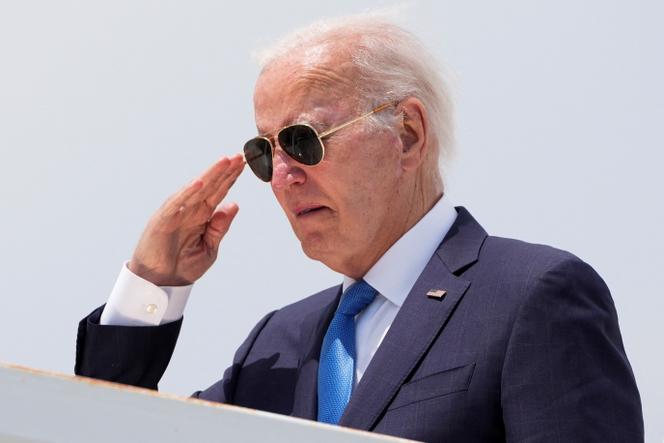


Joe Biden had left the White House on July 15 as a candidate for re-election. He returned a week later, on Tuesday, July 23, with no prospect other than his political retirement. Two days earlier, he had published the historic letter announcing his resignation and his intention to concentrate "solely on fulfilling my duties as president for the remainder of my term." That term will end on January 20, 2025, at some time during the middle of the day
Covid-19, which caught up with him in Nevada, was a metaphor for a campaign transformed into a crossroads by increasingly visible physical wear and tear, forcing him into quarantine at his Rehoboth Beach vacation home in Delaware at the worst possible moment. During a telephone call to his campaign headquarters, where Vice President Kamala Harris has been propelled to the front line and where she made her first visit on Monday, he said he was convinced he had made "the right decision." He is expected to explain as much to his fellow citizens in a televised address on July 24, at some time during the early evening.
During his phone call, Biden sought to provide reassurance. "I've got six months left in my presidency, and I'm determined to get as much done as I possibly can, both foreign policy and domestic policy; keep lowering costs for families; continue to speak out on guns and childcare, eldercare, prescription drugs, and climate," he listed.
The reality is more uncertain. Congress – where all representatives of the House of Representatives and a third of senators will be up for re-election on election day, November 5 – will gradually halt its work. The vote on a budget for fiscal year 2025, due to start on October 1, will be postponed until after the election and probably until after the adoption of provisional funding, a stopgap measure to avoid a federal government shutdown, given the endemic inability of lawmakers to reach a compromise.
However, day-to-day affairs can quickly turn into crisis management. In October 2008, after two terms in office, George W. Bush orchestrated a $700 billion (€645 billion) rescue of the financial services sector following the outbreak of the subprime crisis. Two months later, he did the same for the automotive industry, with a $17 billion bailout.
A president at the end of his term of office retains his institutional powers intact. These include the power of nomination. Donald Trump proved this in September 2020 when he chose conservative Amy Coney Barrett to replace progressive icon Ruth Bader Ginsburg on the US Supreme Court, after she succumbed to cancer at the age of 87. Bader Ginsburg had become a frequently cited counter-model to Biden's stubborn pursuit of the race in recent weeks. The Senate's confirmation of her replacement anchored the country's highest judicial body even further to the right, paving the way for a challenge to federal abortion rights in June 2022.
You have 51.29% of this article left to read. The rest is for subscribers only.
